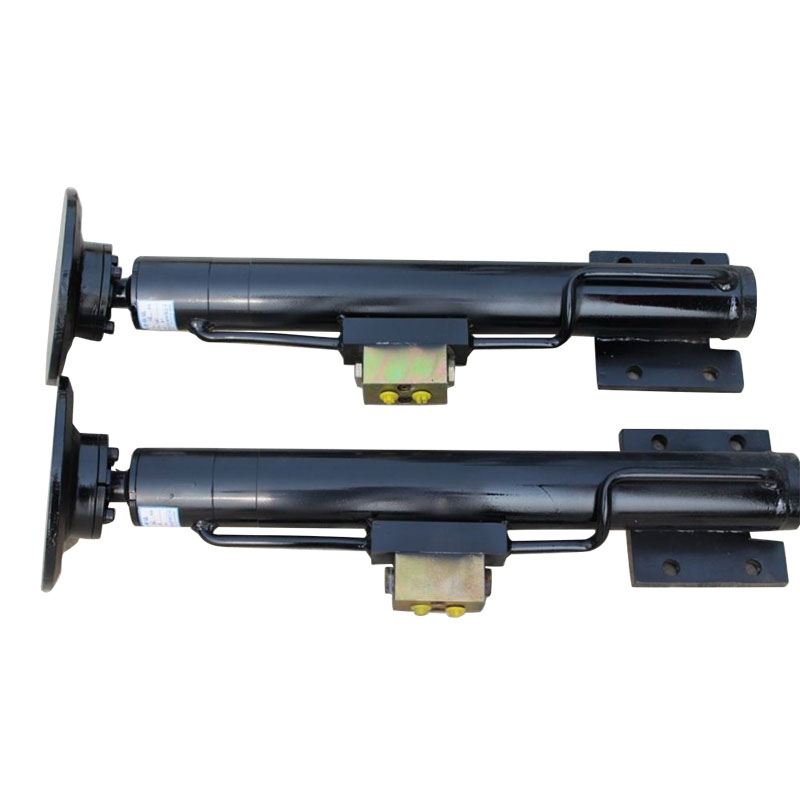How to Make Two Hydraulic Cylinders Work Together: A Comprehensive Guide
2025-06-18
Hydraulic systems are the backbone of many industrial, construction, and manufacturing operations. They are efficient, reliable, and capable of generating immense force. When designing systems that require more power or versatility, it’s often necessary to make two hydraulic cylinders work together. Whether for synchronizing movements or splitting load, ensuring that both cylinders function seamlessly together is crucial for the system’s overall performance.
In this guide, we’ll walk you through the steps, methods, and considerations to ensure two hydraulic cylinders work in perfect harmony.
Why Do You Need Two Hydraulic Cylinders to Work Together?
In many industrial applications, a single hydraulic cylinder may not be enough to achieve the desired movement or force. This is where synchronized hydraulic cylinders come into play. By using two cylinders, manufacturers and engineers can:
Lift heavier loads: Distribute the load between two cylinders to handle more weight without overloading a single cylinder.
Synchronize movements: Ensure that two parts of a machine, like a press, a lift, or a robotic arm, move in perfect synchronization.
Increase stability and control: Especially in applications where precision is key, having two cylinders working together can provide greater control and less risk of misalignment.

Methods for Making Two Hydraulic Cylinders Work Together
There are several methods and techniques to make two hydraulic cylinders operate together efficiently. These methods largely depend on the specific application, the load, and the desired movement. Let's explore the most common strategies:
1. Using a Hydraulic Circuit with Two Valves
One of the simplest ways to control two cylinders working together is through a hydraulic circuit with two valves. This approach is commonly used when the two cylinders need to move in synchronization (same speed and direction) or sequentially (one follows after the other).
How It Works:
Two hydraulic valves are used to control each cylinder.
Both valves are actuated in a way that either allows both cylinders to extend or retract together or in a sequence, depending on the requirement.
By adjusting the flow rate or using pressure relief valves, you can synchronize their movements.
This is a relatively straightforward method but works best for applications where precise synchronization isn’t critical.
2. Using a Dual-Acting Hydraulic Circuit
For more precise control, a dual-acting hydraulic circuit can be employed, allowing both cylinders to function with independent control over both extension and retraction.
How It Works:
Each cylinder is connected to a separate hydraulic circuit with a dual-acting valve (one for extending and one for retracting).
The hydraulic fluid is controlled through directional control valves, which can synchronize the cylinders' actions or allow them to move independently.
This method is ideal for high-precision applications where you need to fine-tune the movements of both cylinders, like in automated manufacturing systems or pressing operations.
3. Using a Hydraulic Synchronizing Valve (Flow Divider or Synchronic Valve)
A hydraulic synchronizing valve (also known as a flow divider) is a highly effective way to synchronize two cylinders. This system ensures that both cylinders receive an equal amount of hydraulic fluid, which helps achieve synchronized extension and retraction.
How It Works:
The flow divider splits the hydraulic flow from a single pump and directs it equally to both cylinders, ensuring they move at the same speed and with the same force.
In case one cylinder requires more force (due to varying load or resistance), the flow divider compensates, adjusting the fluid flow to keep both cylinders synchronized.
This system is ideal for applications requiring precise load balancing, such as lifting platforms, robotic arms, and heavy-duty cranes.
Hydraulic synchronizing valves are particularly beneficial when working with longer strokes, heavy loads, or multiple cylinders that need to work in tandem.
4. Using Proportional Valves for Precision Control
For even greater control over the synchronization of two cylinders, proportional valves are often employed. These valves allow for variable flow control, which means you can fine-tune the speed, pressure, and movement of the cylinders in real-time.
How It Works:
Proportional valves control the hydraulic fluid’s flow and pressure dynamically based on input signals.
The system allows you to control the speed of both cylinders more precisely and adjust their movement to compensate for load imbalances, temperature changes, or other variables.
This method is often integrated into computerized control systems for applications that demand highly accurate and synchronized movements, such as aerospace, automotive manufacturing, or precision engineering.
Key Considerations for Synchronizing Two Hydraulic Cylinders
When designing a system with two hydraulic cylinders working together, there are several important considerations to ensure success:
1. Fluid Flow and Pressure Balancing
Ensure equal flow: It's crucial that both cylinders receive an equal flow of hydraulic fluid to maintain synchronized motion. An imbalance can cause one cylinder to move faster than the other, leading to misalignment or uneven load distribution.
Control pressure variations: Pressure variations due to load changes, temperature fluctuations, or system inefficiencies can affect synchronization. Using proportional or flow divider valves can mitigate this issue.
2. Cylinder Sizing
Both cylinders should be properly sized according to the load and force requirements. Mismatched cylinders can lead to uneven force distribution, which could cause one cylinder to overwork and fail prematurely.
3. Temperature and Fluid Viscosity
Changes in fluid temperature can affect viscosity, which in turn can impact how smoothly the cylinders operate. Temperature compensation valves and hydraulic fluid cooling systems can help manage this challenge.
4. Load Distribution
If the cylinders are working to lift or push a heavy load, make sure the load is evenly distributed to prevent strain on one cylinder. Using load sensors can help monitor and adjust for any load imbalances in real time.
Synchronizing two hydraulic cylinders is essential for a wide range of applications that require precise, controlled, and powerful movements. By understanding the various methods—whether using dual-acting circuits, synchronizing valves, or proportional control systems—you can ensure that both cylinders work together effectively, maximizing performance and efficiency.
Always consider key factors such as fluid flow, cylinder sizing, and load distribution when setting up a system to ensure that your hydraulic cylinders will work harmoniously. With the right setup, your hydraulic system will perform at peak efficiency, whether in heavy lifting, manufacturing, construction, or precision machining.


